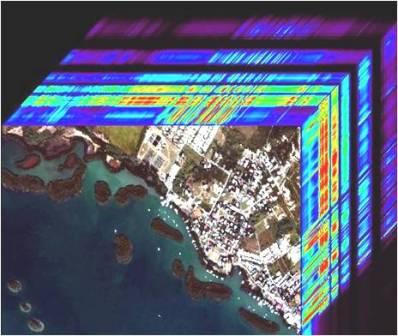REMOTE SENSING & BIO-OPTICS
 Some of the research being conducted at the Bio-optical Oceanography Laboratory of the University of Puerto Rico, Mayaguez Campus, involves field measurements of apparent and inherent optical properties of the water column in both coastal and oceanic environments.
Some of the research being conducted at the Bio-optical Oceanography Laboratory of the University of Puerto Rico, Mayaguez Campus, involves field measurements of apparent and inherent optical properties of the water column in both coastal and oceanic environments.
These optical measurements are carried out in support of research that can be divided into two thematic areas:
1) coral reef bio-optics and harmful algal blooms
2) validation of remote sensing data and algorithm development
Phytoplankton strongly influences the optical properties of natural waters. Optical methods are well suited to assess harmful algal blooms (HAB’s). We have used the GER-1500 and the Satlantic HyperPro spectroradiometers to derive remote sensing reflectance curves (Rrs) which are used to detect and quantify phytoplankton groups, including HAB’s. From the downwelling irradiance (Ed) profiles of the Satlantic we can also calculate the spectral attenuation coefficients (Figure 3).

The dinoflagellate Cochlodinium polykrikoides (Margalef) has been identified as a potentially ichthyotoxic organism distributed through warm temperate and tropical waters. Blooms of C. polykrikoides (Figure 4) have been recurrently observed in Bioluminescent Bay since 1958. The optical properties of these organisms are being studied in the field and under pure culture conditions to develop a methodology for their detection using remote sensing.


We use underwater Rrs measurements to create spectral libraries of coral reef organisms in support of airborne hyperspectral remote sensing. In addition, underwater Rrs data are used for water column corrections of AVIRIS data using “flat-field” calibration targets (Figure 5). Our main goal is to create a benthic map of La Parguera to study the impact of the 2005 coral bleaching episode in Puerto Rico and to map the distribution and condition of the threatened Acropora species (Figure 6).

